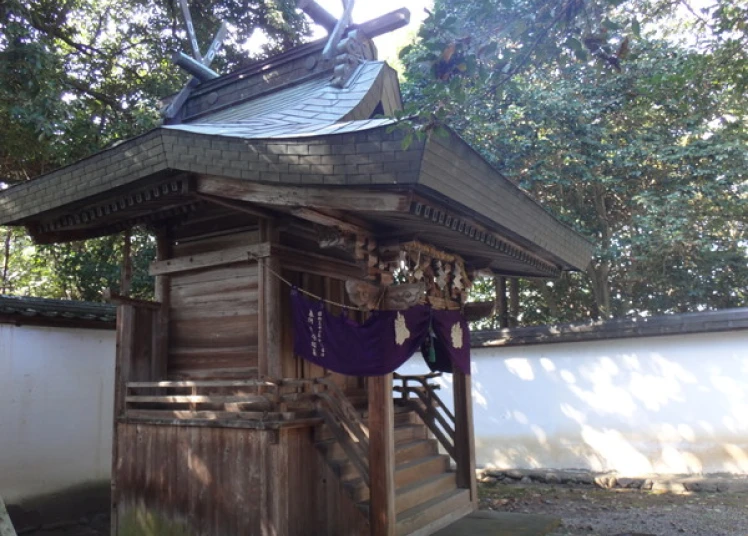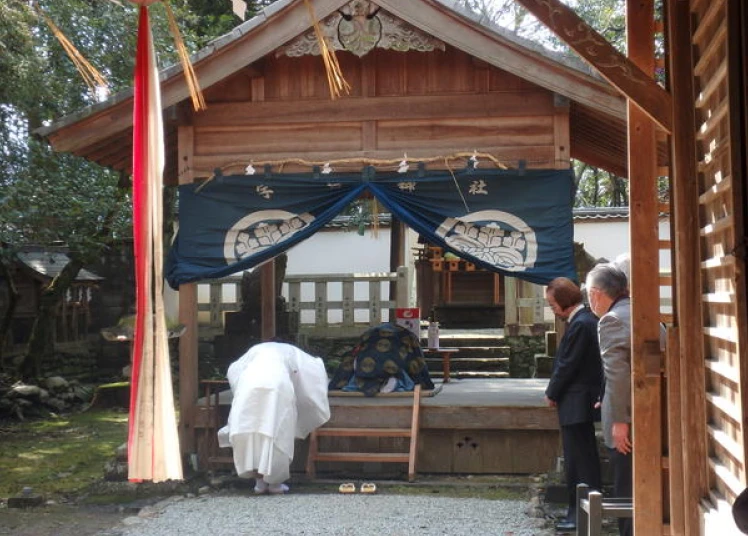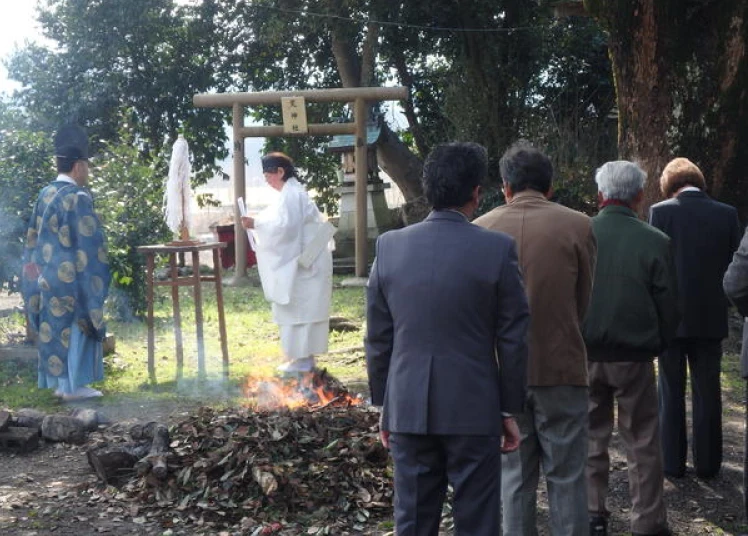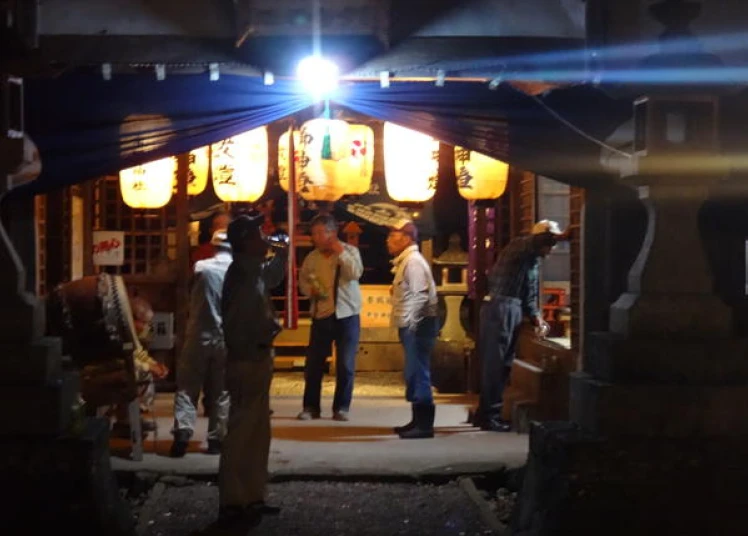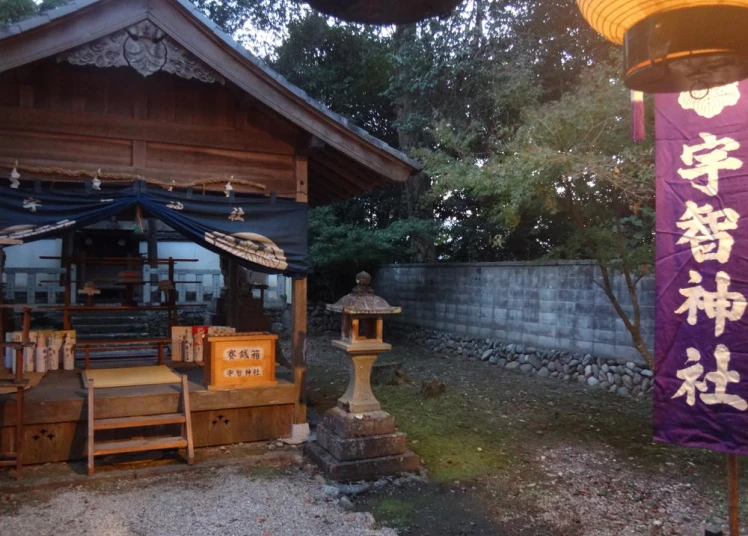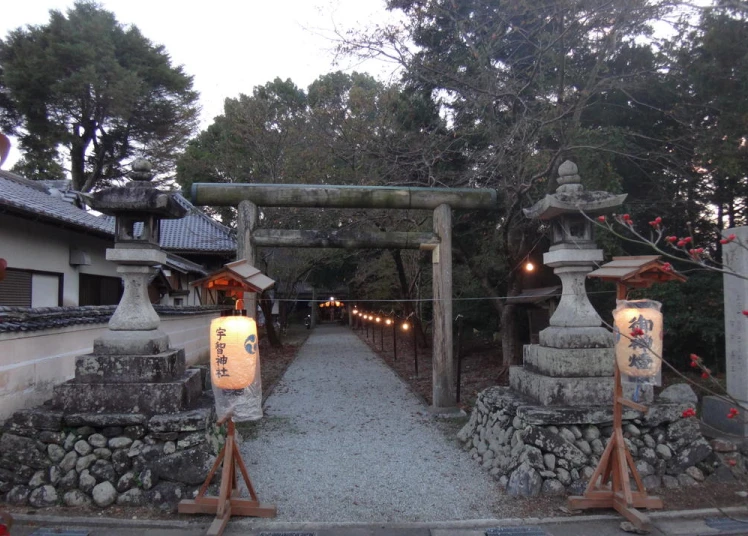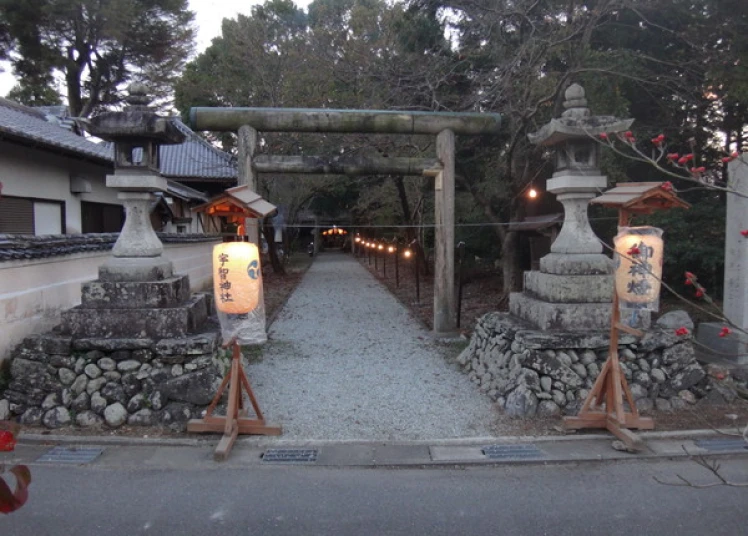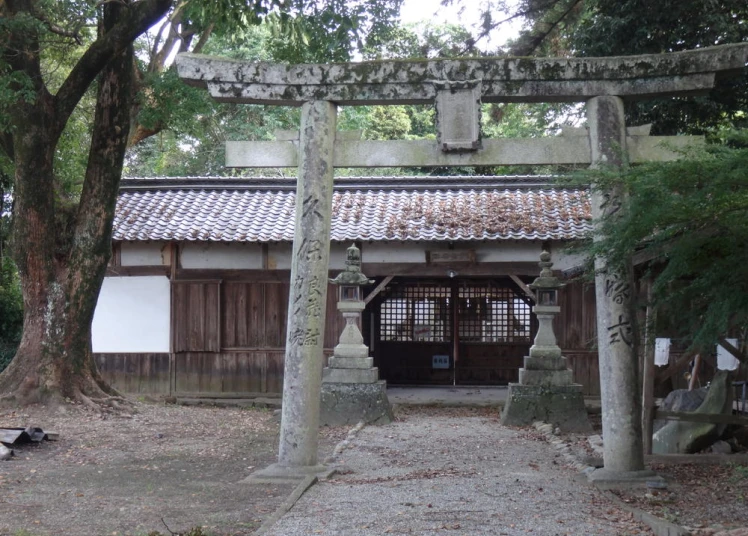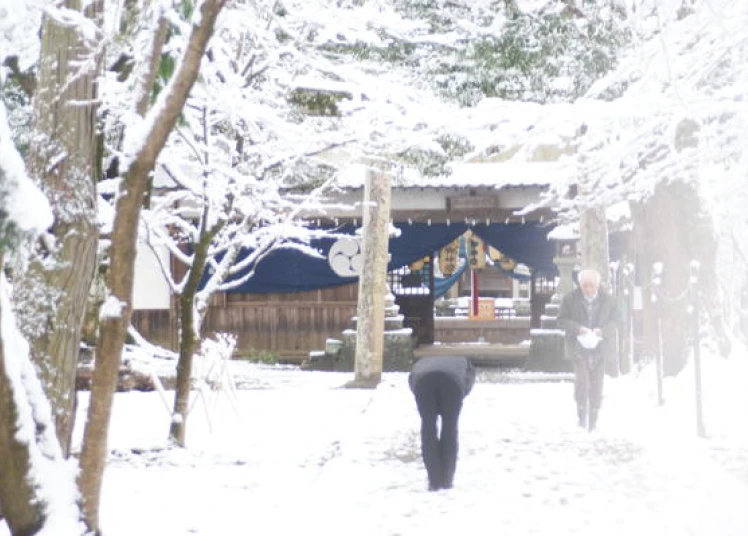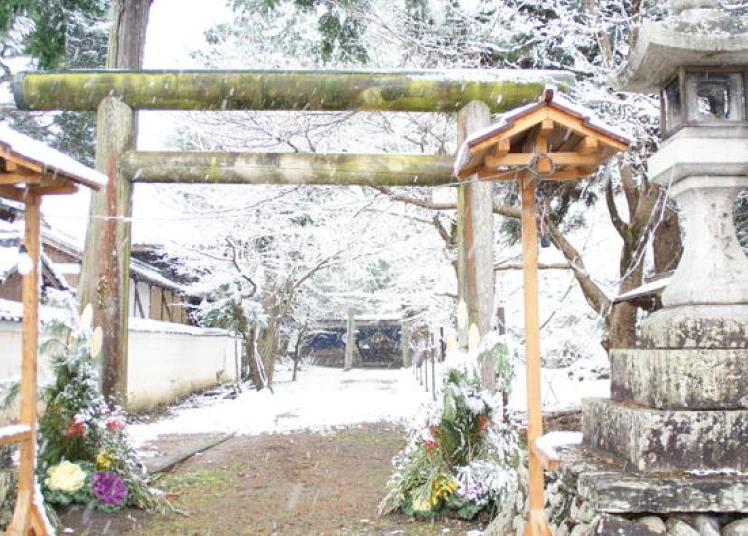Uchi Shrine
Kokushosan
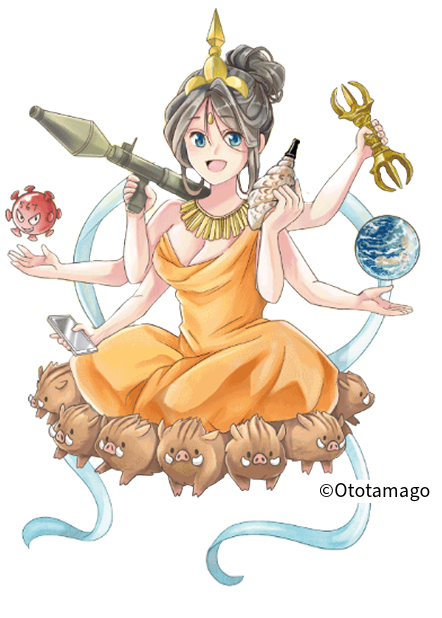
The beginning of these two entities, which suggest an extraordinary bond of fate, dates back over 1,300 years to the Asuka period.
Guided by intense light emitted each night, [En no Gyoja] came to this place and established Kokusho-ji (now Anjo-ji) according to the divine oracle he received from Kokusho Myojin, who sat beneath a great tree.
Uchi Shrine, which is adjacent to Kokusho-ji, is locally called “Kokushosan” and has been beloved since ancient times.
Safe childbirth and fertility
From the Man'yoshu (8th century anthology of Japanese poetry)
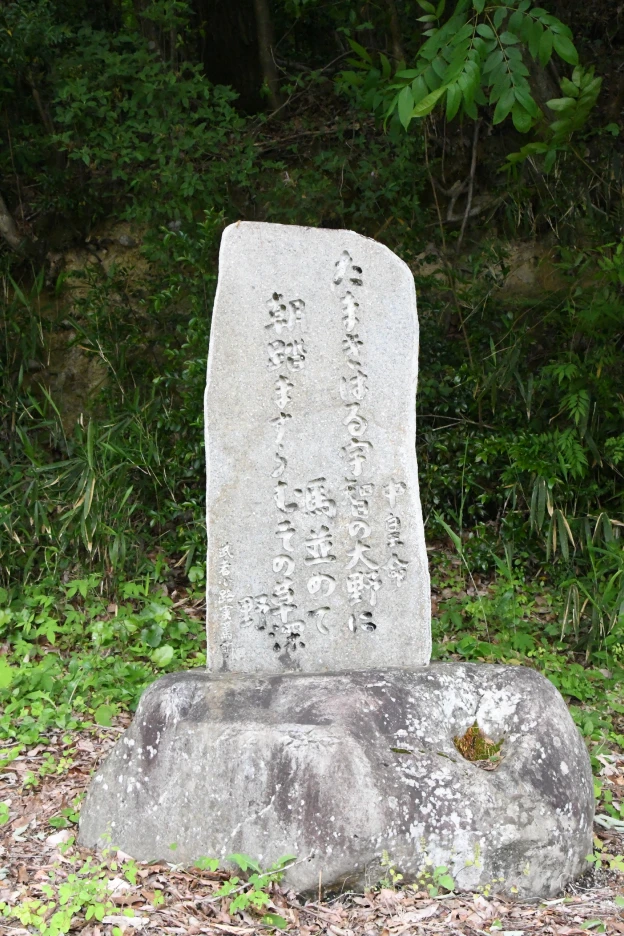
"Lining up horses on the great plains of Uchi"
[Waka (Original Text)]
Tamakiharu / Uchi no ōno ni / uma namete / asa fumasu ramu / sono kusa fukano
[Modern Translation]
On the great plains of Uchi that emit beautiful light like jewels, horses are lined up, trampling through in the morning that grass-deep wilderness.
[Commentary]
This poem is attributed to Nakatsu Sumeramikoto (Imperial Prince Naka). Uchi is located in the area of present-day Gojo City, Nara Prefecture, and was the stronghold of the Katsuragi clan, a powerful family of the Yamato court. Nakatsu Sumeramikoto composed this poem depicting the scene of advancing through grass-deep fields on horseback in the land of Uchi. It conveys the exhilaration of riding horses through magnificent nature and the beauty of vegetation shining in the morning sunlight.
Signboard
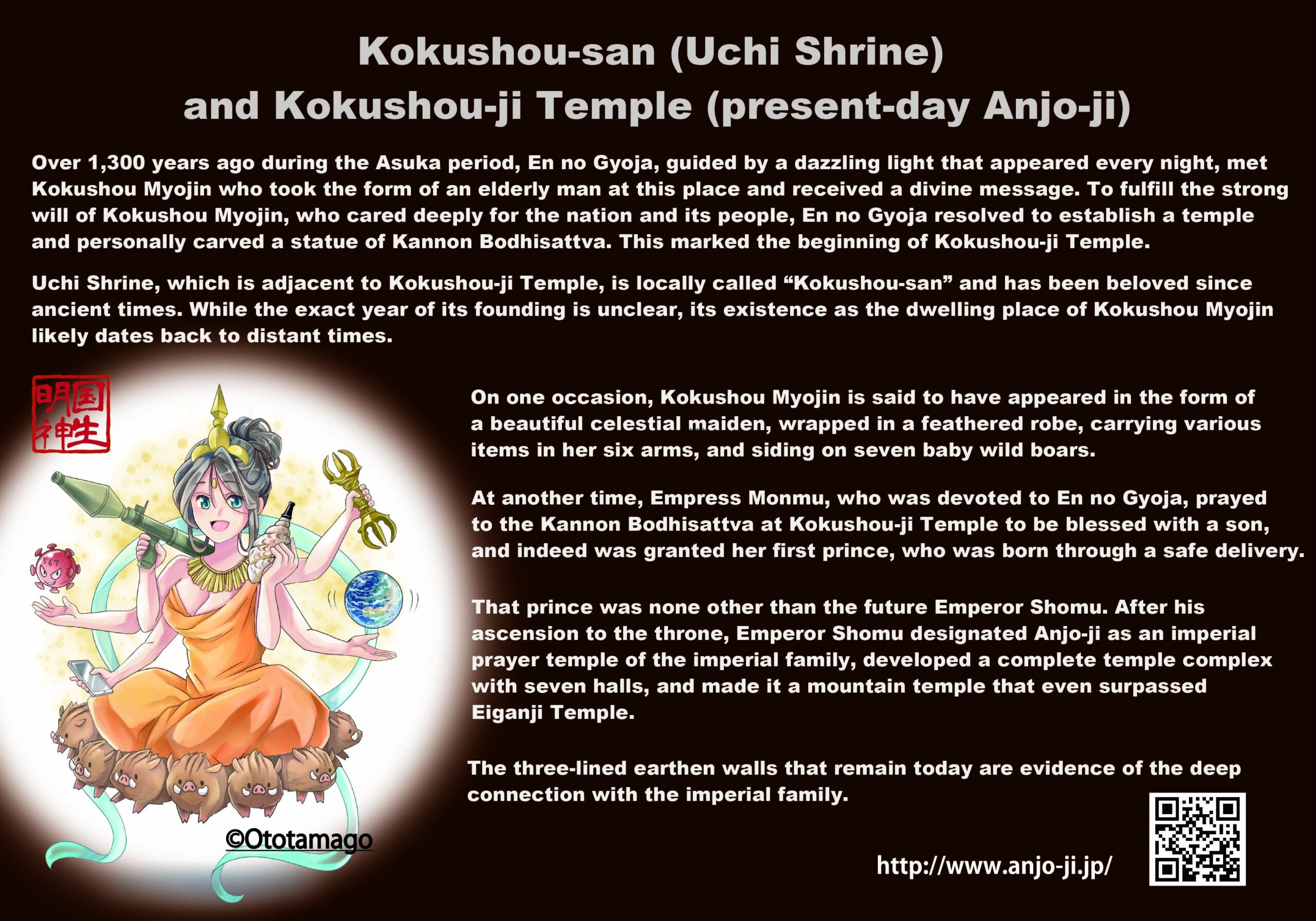
Historical Document
⑤ Record of Drought and Rain Prayers from Taisho 2 (1913) (Reference material: Collection of Uchi Shrine)
※ You can view the full text by scrolling horizontally

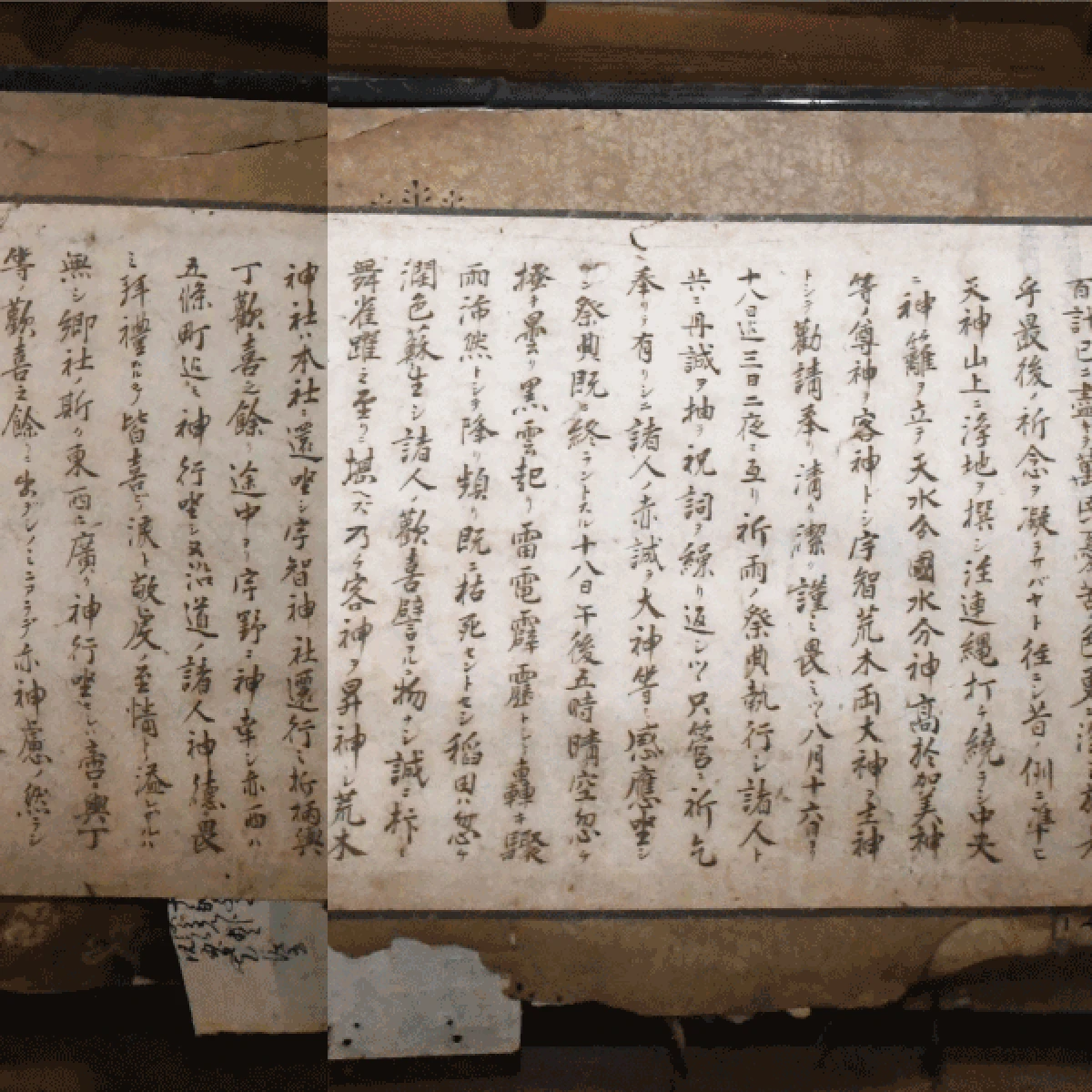
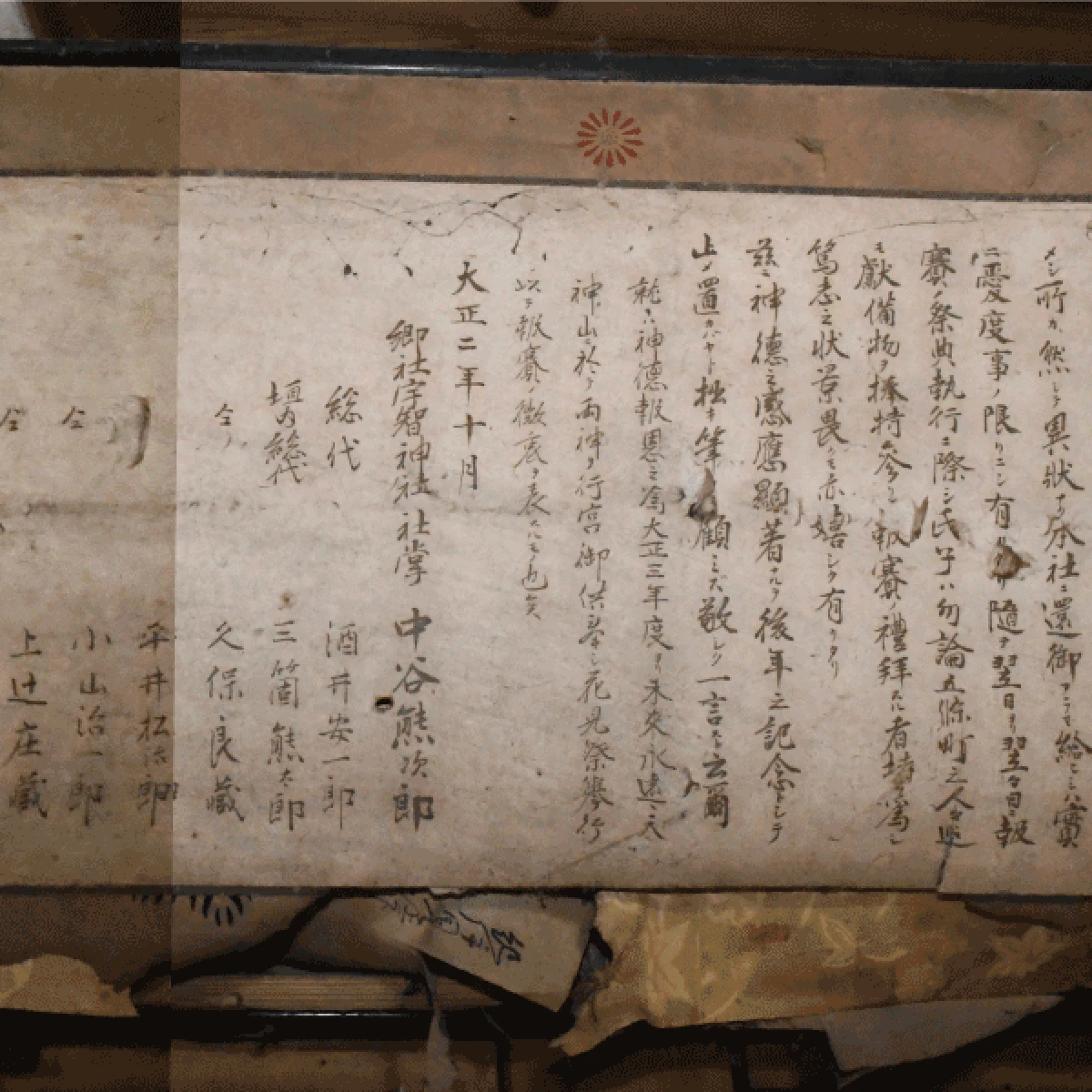
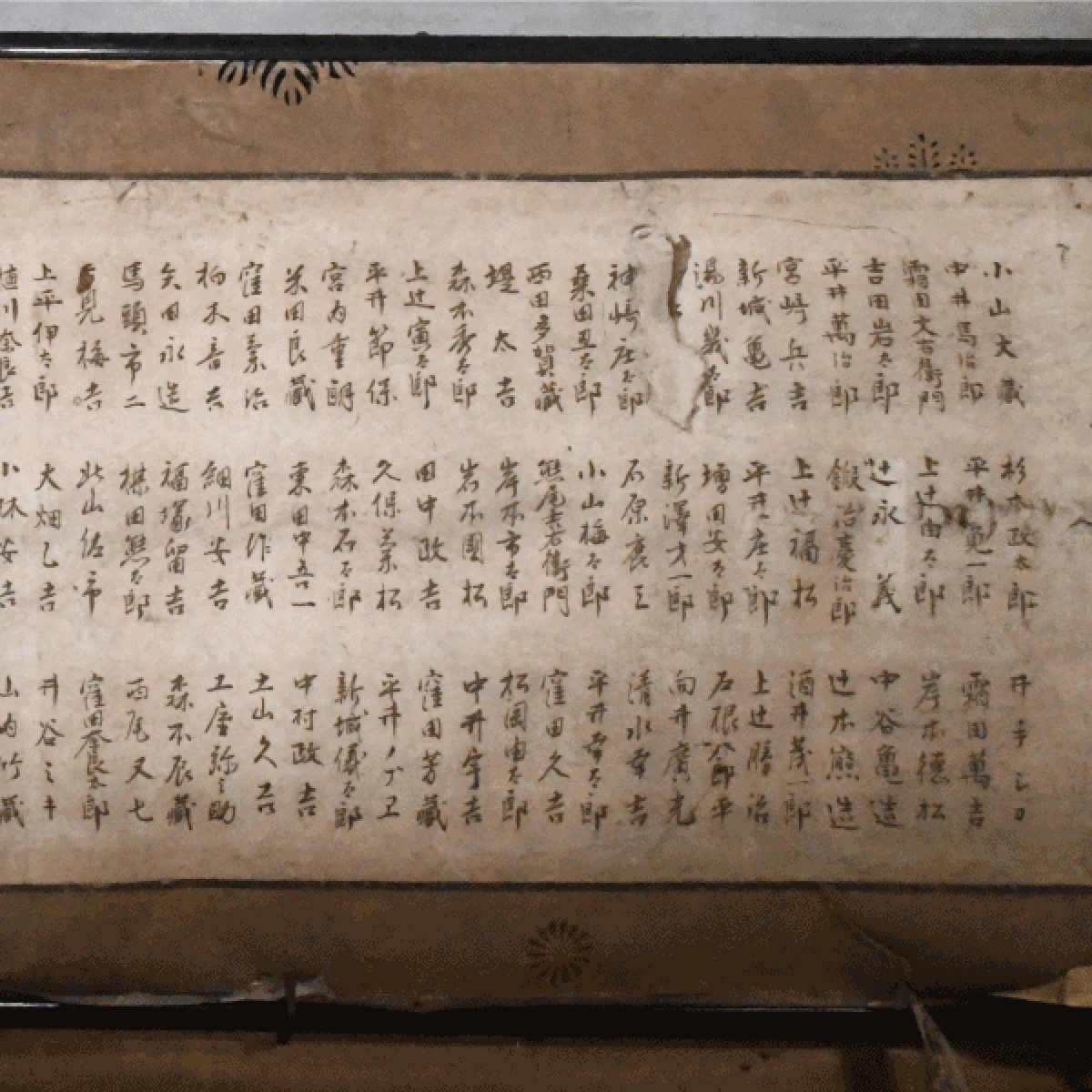
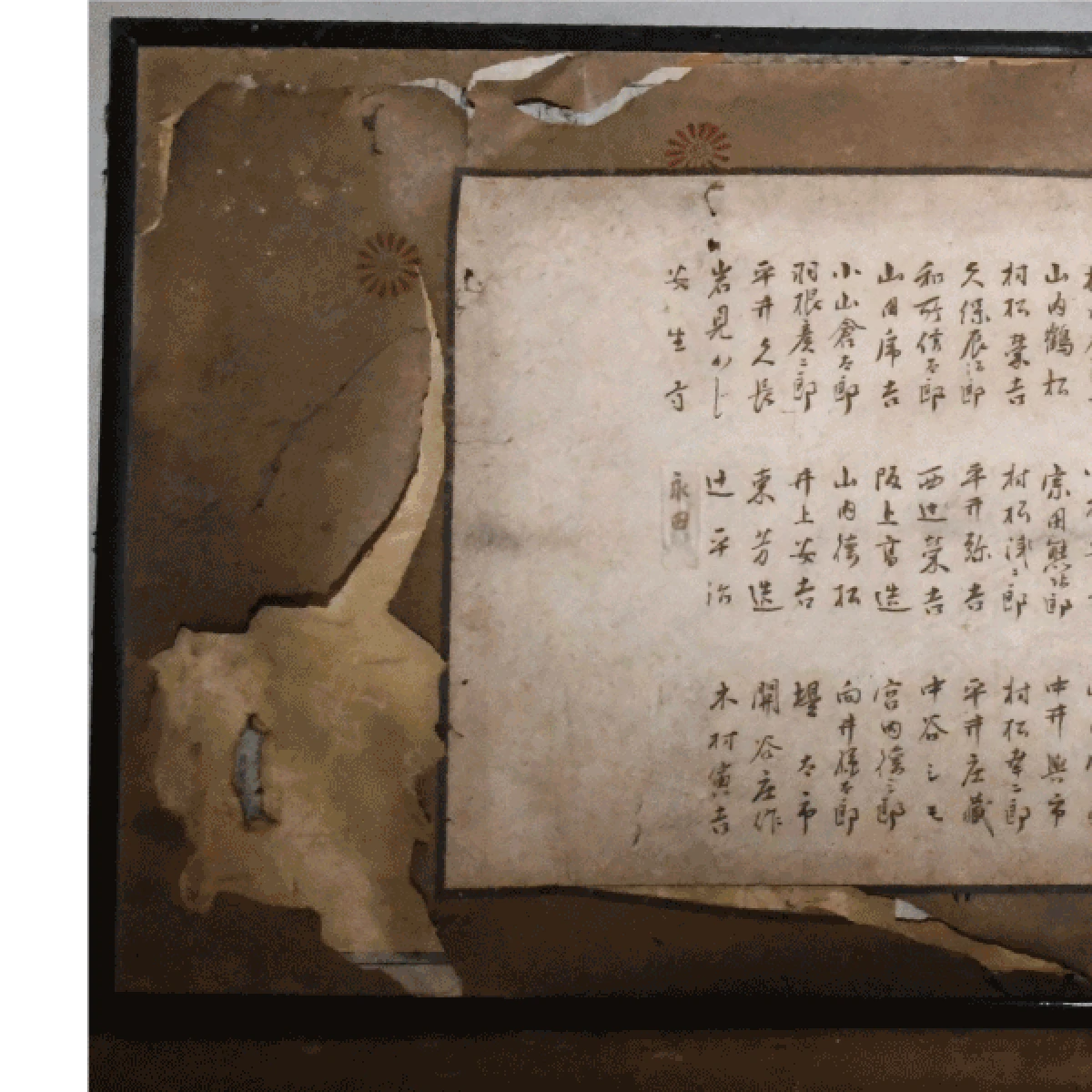
Historical Document
The “Record of Drought and Rain Prayers from Taisho 2” (1913) housed at Uchi Shrine is a record of rain prayer ceremonies conducted at Uchi Shrine during the great drought of Taisho 2. It provides detailed accounts of the social conditions of the time, people’s hardships, and methods of rain prayers, making it a valuable historical source for understanding abnormal weather and natural disasters even today.



Uchi Shrine Photo
